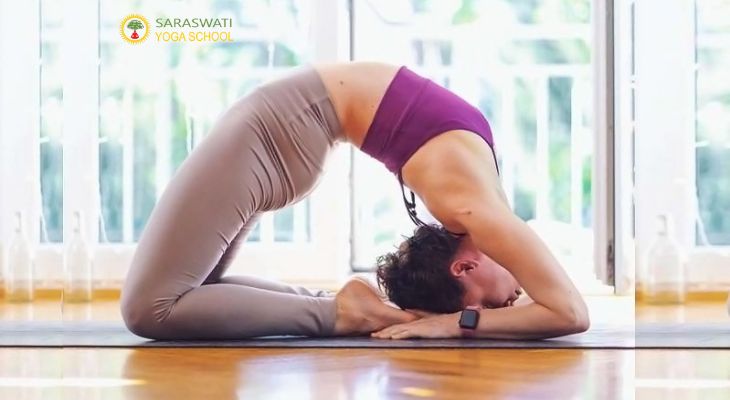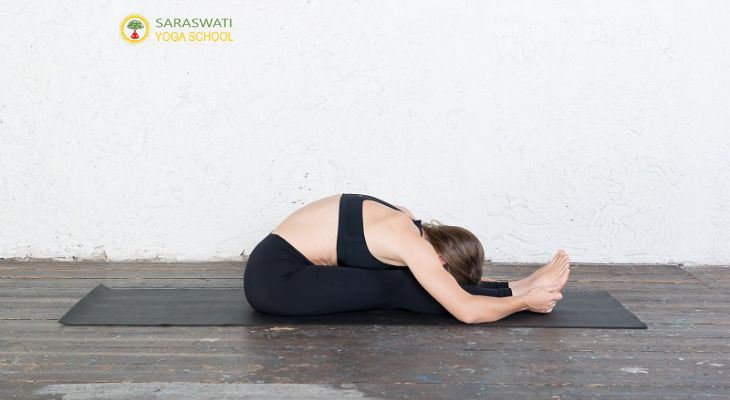8 Yoga Poses for Flexibility

Yoga is not only an excellent way to relieve stress and improve physical strength, but it can also increase flexibility. The various yoga postures, or asanas, stretch the muscles, ligaments, and tendons in the body, which can lead to greater flexibility over time. In this article, we'll explore eight yoga poses that can help improve flexibility.
Table of Contents
Introduction
Why Flexibility is Important
Understanding Yoga
Yoga Props for Flexibility
Downward Facing Dog
Pigeon Pose
Cobra Pose
Triangle Pose
Seated Forward Bend
Bridge Pose
Cow Face Pose
Child's Pose
Conclusion
FAQs
Introduction
Whether you are a seasoned yogi or a beginner, incorporating yoga into your daily routine can help improve flexibility. Yoga is an ancient practice that has been around for thousands of years, and its benefits have been proven time and time again. In this article, we'll explore eight yoga poses that can help increase flexibility.
Why Flexibility is Important
Flexibility is an important component of physical health and wellness, as it can provide a range of benefits for the body and mind. Having good flexibility means that the joints and muscles are able to move through their full range of motion with ease and without pain or discomfort. This is important for maintaining proper posture, reducing the risk of injury during physical activity, and improving athletic performance.
Additionally, flexibility exercises, such as yoga and stretching, can help to relieve stress and tension in the body, leading to a greater sense of relaxation and calm. Moreover, as we age, our bodies naturally lose flexibility, which can lead to stiffness, pain, and decreased mobility. By incorporating regular stretching and flexibility exercises into our daily routines, we can help slow this natural decline and improve overall quality of life in older adults.
Overall, the benefits of flexibility are numerous, and incorporating flexibility exercises into our fitness routines can help us achieve our health and wellness goals and live a healthier, more active lifestyle.
Understanding Yoga
Yoga is a holistic practice that incorporates physical postures, breath control, and meditation. The physical postures, or asanas, are designed to stretch and strengthen the muscles, while breath control helps to calm the mind and improve focus. Meditation can help reduce stress and anxiety, leading to greater mental clarity and emotional balance.
Yoga Props for Flexibility
Yoga props can be helpful tools for improving flexibility and range of motion during yoga practice. Props such as blocks, straps, and bolsters can assist in deepening poses and making them more accessible, allowing practitioners to safely and effectively stretch their muscles and improve their flexibility.
Blocks can be used to support the body in standing poses, provide a foundation for balance poses, or help deepen forward folds. Straps can assist in stretching the hamstrings, hips, and shoulders, and can also be used to deepen stretches in seated poses. Bolsters can be used to support the back and hips in restorative poses, allowing for deeper relaxation and stretching of the body.
By incorporating yoga props into their practice, practitioners can safely and effectively improve their flexibility and range of motion, reducing the risk of injury and discomfort. Additionally, props can provide additional support and comfort during practice, making yoga more accessible to individuals of all ages and fitness levels.
Overall, yoga props can be valuable tools for anyone looking to improve their flexibility and range of motion, whether they are new to yoga or experienced practitioners. By incorporating props into their practice, individuals can deepen their stretches, improve their posture, and reduce the risk of injury during physical activity.
Downward Facing Dog

Downward Facing Dog is a popular yoga pose that is great for improving flexibility in the hamstrings, shoulders, and spine. To perform this pose, start on your hands and knees with your wrists directly under your shoulders and your knees under your hips. Then, lift your hips up and back, straightening your arms and legs into an inverted V-shape.
In this pose, it's important to focus on grounding down through your hands and feet while lengthening your spine and drawing your shoulder blades down and away from your ears. You can also pedal out your legs and lift your heels up and down to deepen the stretch in your hamstrings and calves.
Downward Facing Dog is a versatile pose that can be modified to suit different levels of flexibility and comfort. For example, you can bend your knees slightly to reduce strain on the hamstrings, or place your hands on blocks to bring the ground closer to you. Additionally, this pose can be used as a transitional pose between other yoga sequences or as a resting pose to take a break during a yoga practice.
Pigeon Pose

Pigeon Pose is a yoga pose that is great for improving flexibility in the hips and glutes. To perform this pose, start in a high plank position with your hands under your shoulders and your feet hip-distance apart. Then, bring your right knee forward and place it behind your right wrist, lowering your right leg to the floor.
Extend your left leg straight behind you, keeping your toes pointed and your foot flexed. Slowly lower your body down towards the ground, resting on your forearms or on a block if needed. Hold this pose for several deep breaths, then repeat on the other side.
In this pose, it's important to focus on keeping your hips squared and level, and your shoulders relaxed away from your ears. If you have tight hips, you may need to use a block or blanket under your hips for support. You can also use a strap to help deepen the stretch in your hips and glutes.
Pigeon Pose is a great pose for improving flexibility in the hips, reducing tension and discomfort in the lower back and hips. Additionally, this pose can be used as a restorative pose to help calm the mind and reduce stress and anxiety.
Cobra Pose

Cobra Pose, or Bhujangasana, is a backbend that can help stretch the chest, shoulders, and spine. Begin lying on your stomach with your hands under your shoulders. As you inhale, lift your chest off the ground, keeping your elbows close to your sides. Hold for several breaths, then release.
Triangle Pose

Triangle Pose, or Trikonasana, is a standing pose that stretches the hamstrings, hips, and spine. Begin standing with your feet about three to four feet apart. Turn your right foot out to the side and your left foot in slightly. Reach your right hand toward your right foot, keeping your left hand lifted toward the ceiling
Seated Forward Bend

Seated Forward Bend, or Paschimottanasana, is a seated posture that stretches the hamstrings, lower back, and spine. Begin sitting with your legs extended in front of you. As you inhale, reach your arms overhead, then as you exhale, fold forward, reaching for your toes. Hold for several breaths, then release.
Bridge Pose

Bridge Pose, or Setu Bandha Sarvangasana, is a backbend that can help stretch the chest, shoulders, and spine. Begin lying on your back with your knees bent and your feet flat on the ground. As you inhale, lift your hips up toward the ceiling, pressing your feet and arms into the ground. Hold for several breaths, then release.
Cow Face Pose

Cow Face Pose, or Gomukhasana, is a seated posture that stretches the hips, thighs, and shoulders. Begin sitting with your legs crossed in front of you. Reach your right arm overhead, then bend your elbow and reach your right hand toward your left shoulder blade. Reach your left arm behind your back and clasp your hands. Hold for several breaths, then switch sides.
Child's Pose

Child's Pose, or Balasana, is a gentle pose that can help release tension in the back, neck, and shoulders. Begin on all fours, then lower your hips back toward your heels as you reach your arms forward. Rest your forehead on the ground and breathe deeply for several breaths.
Conclusion
Incorporating yoga into your daily routine can help improve flexibility and overall physical health. The eight yoga poses we've explored in this article can help increase range of motion, prevent injury, and improve posture. Remember to listen to your body and never push yourself beyond your limits. With regular practice and patience, you can achieve greater flexibility and a more balanced mind-body connection.
FAQs
Can yoga help with back pain?
Can I practise yoga if I'm not flexible?
What is the best time of day to practise yoga?
How often should I practise yoga?
What should I wear to a yoga class?
Yes, many yoga poses can help relieve back pain by stretching and strengthening the muscles of the back and spine.
Yes, yoga is accessible to people of all fitness levels and flexibility. With regular practice, you can increase flexibility and range of motion.
The best time to practise yoga is whenever it fits into your schedule and routine. Some people prefer to practise in the morning, while others prefer to practise in the evening to wind down before bed.
It is recommended to practise yoga at least three times a week to see noticeable improvements in flexibility and physical health.
Wear comfortable, breathable clothing that allows for a full range of motion. Avoid loose or baggy clothing that may get in the way during certain poses.